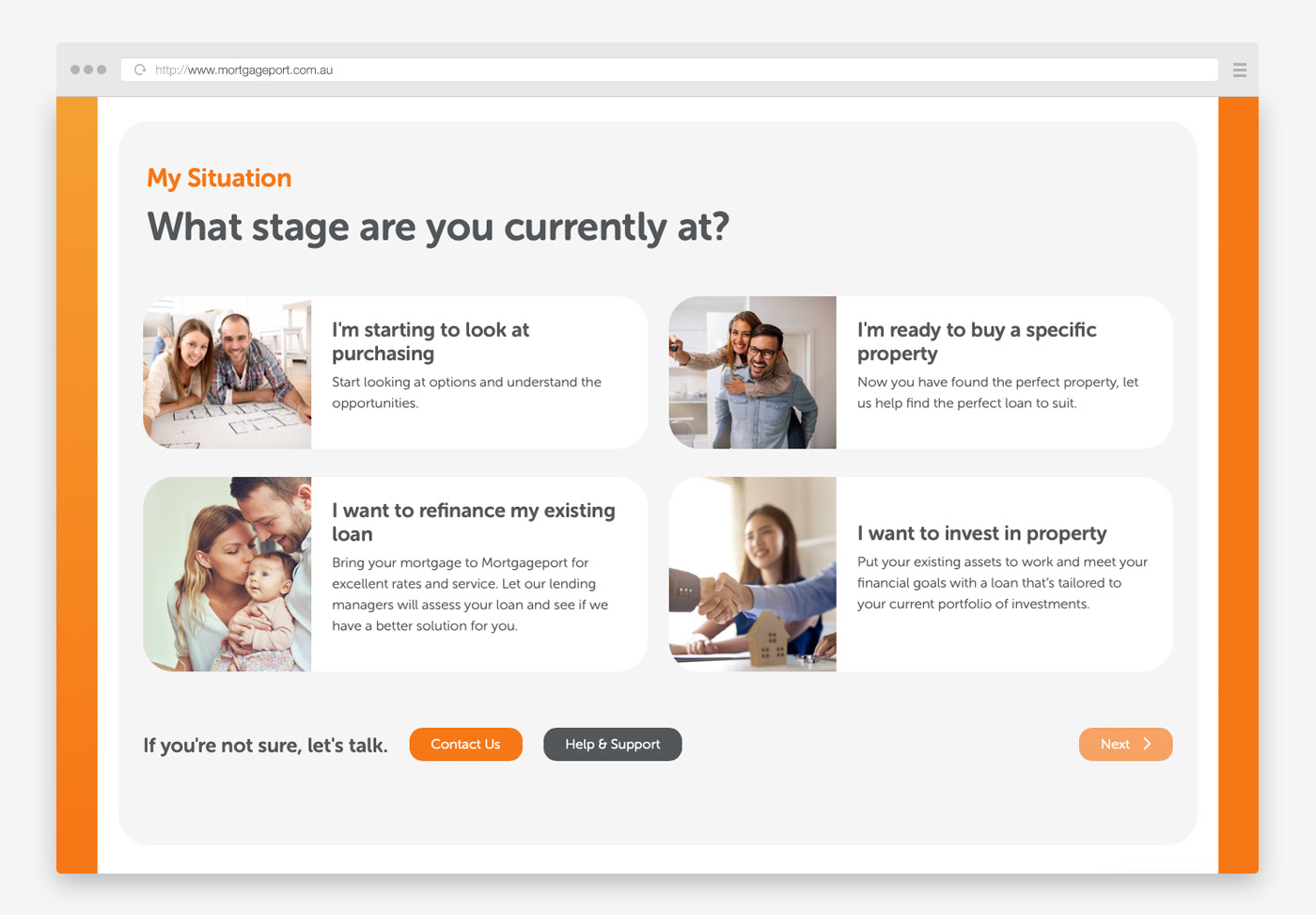Why Mortgageport?
Nimble, tailored, and trusted
As a lender and mortgage manager we custom-design home loans to fit you, and not the other way round. We pride ourselves in offering a better deal than the banks or brokers while delivering service that hasn’t lost its personal touch.
-
Fully accredited
Mortgageport is a long-standing member of the Mortgage & Finance Association of Australia (MFAA).
-
Here for the long term
We’ve been helping customers secure finance since 1998.
-
Flexible
We customise loans with the features you want and competitive rates to suit your needs.
-
Personal service
Our Lending Managers are dedicated to their clients’ success and serve as the single point of contact.
-
In-house credit team
We approve your loan in-house, so you don’t have to wait in line to get an answer.
-
Trusted and recommended
More than 150+ independent accounting firms refer their clients to us because of our expertise and service.
Home loan calculator
Calculate your borrowing power at-a-glance
If you’re not sure, let’s talk.
Rates & key features
Enjoy the best rates on a fixed or variable rate home loan that we customise to your needs.
Variable rate home loans
Enjoy the flexibility and benefits a variable rate home loan offers.
With no penalties for early repayments and the ability to redraw extra payments, a variable rate home loan offers maximum flexibility.
Variable rates from
p.a.
Interest rate *
p.a.
Comparision rate *
Fixed rate home loans
Lock in certainty with repayments that will stay the same over a fixed period.
Fixed rate home loans offer maximum certainty, giving you peace of mind for budgeting and no surprises over the fixed loan term.
Fixed rates from
p.a.
Interest rate *
p.a.
Comparision rate *
Features and benefits
We provide more value to our customers because we appreciate you.
More flexibility means a better home loan for your specific needs and situation.
Rates & Fees
- Great rates on fixed and variable loans
- No ongoing fees
- No ongoing account keeping fees
Features & Inclusions
- Enjoy competitive rates on Land & Construction Loan that we customise to your personal needs
- The flexibility of principal + interest or interest only up to five years, and up to four separate loan splits
- Stay in control of finances with a simplified monthly statement that tracks your offset balance, loan balance and all transactions
- Minimise the size of your deposit with a Loan-to-Value Ratio (LVR) giving you borrowing capacity up to 95%
Save More With Offset Account- Minimise your interest payments with a 100% Offset Account
- Immediate access to money in your Offset Account when you need it through ATMs, online banking or in person
- No need to commit to regular deposits to your Offset Account over and above your loan repayments
Loan Process
Our simple process that delivers the best possible home loan for you
Got questions ? We have the answers
Question not answered?
The next step is yours
However you feel comfortable, start your journey in your own way.
Got question, ask us.

Pre-qualify today
By answering a few short questions, we can assess your borrowing power and come back to you to finalise your application.

Request a call back
Let us contact you and talk you through the process, regardless of your needs.

Apply now
Start your home loan application by providing us with your details, and we can take it from there.
Our specialised home loan consultants can make it happen.
Our team
Clint Corcoran
Clint Corcoran helps his clients to secure the best home loan possible as a Lending Manager at Mortgageport.
Brody Henry
Brody’s focus is on supporting clients to purchase, refinance or invest in property.
Julianne Zammit
Julianne Zammit is a Lending Manager at Mortgageport, with a focus on helping her customers to secure the best home loan possible.
John Berghella
John Berghella is Sales Manager for MyChoice, a joint venture between Mortgageport and McDonald Jones Homes.
Phil Mikhail
Phil Mikhail is National Sales Director - Direct, responsible for scaling up the Sales and Distribution team.
Michael McKelvie
Michael McKelvie is the Senior Manager, Origination and is responsible for writing loans for our customers.
Meet more of us
Our TeamReady? We are too!
Let’s get you where you want to go.
We provide many ways you can get in touch with us. Whether call, in person or email, we can work into your busy day as you need.
Book an appointment
Find a time on your calendar and let us know. We’ll call you back and discuss your needs.
Email your enquiry
Take the time to outline your needs and we’ll take the time to make it happen.
